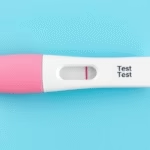Understanding the Difference between Implantation Bleeding and Period
The difference between implantation bleeding and period is significant, and understanding it can provide clarity for many individuals considering pregnancy. Implantation bleeding occurs when a fertilized egg attaches itself to the lining of the uterus. This process typically happens around six to twelve days after conception. In contrast, a period is the shedding of the uterine lining, usually occurring every month in women of childbearing age who are not pregnant. Many women mistake implantation bleeding for a light period because they can both happen around the same timeframe. However, there are distinct differences in their timing, color, duration, and characteristics that can help to differentiate one from the other. In this article, we will explore these differences in great detail, shedding light on the signs and symptoms of each.
Identifying Implantation Bleeding
Implantation bleeding holds unique characteristics that set it apart from a regular period. Typically, this type of bleeding is much lighter than regular menstruation. It may appear as light spotting and is likely to be pink or brown in color, rather than the bright red often associated with a period. It generally lasts for a few hours to a couple of days at most. Most individuals will notice this bleeding happening a week or so before their expected menstrual period. Timing is crucial – if you notice light spotting around this time, it could signify implantation.
Furthermore, implantation bleeding usually does not come with the typical symptoms of a menstrual cycle. Many do not experience the cramps associated with menstruation, which can be a signal that this bleeding is different. Being aware of these signs is essential for those who are trying to conceive and want to understand what is happening within their bodies.
Understanding Menstrual Bleeding
A menstrual period has its own set of characteristics that contrast noticeably with implantation bleeding. It typically starts with spotting that develops into heavier bleeding. Most women will experience bright red blood during their period, and it may be accompanied by symptoms such as cramps, mood swings, bloating, and breast tenderness.
The average duration of a menstrual period ranges from three to seven days. The flow can vary in intensity and usually starts heavy but becomes lighter towards the end of the cycle. Therefore, the regularity and characteristics of menstrual bleeding are well-known to those who experience it regularly and can serve as a reference point for distinguishing between the two types of bleeding.
Additionally, menstrual cycles are regular for most individuals, occurring roughly every 28 days, though this can vary. If a person experiences irregular bleeding patterns that do not align with their typical cycle, it can notify them of potential changes or health concerns.
Timing is Key
Timing plays a crucial role in distinguishing between implantation bleeding and a period. Implantation bleeding occurs between days 6 to 12 after ovulation, approximately a week prior to an expected period. Understanding an individual’s cycle timing can help in recognizing when to be alert for potential implantation bleeding.
In contrast, a period occurs on a predictable cycle, whether it is every 28 days or another variation. Those familiar with their menstrual cycles can use this information to identify anomalies. For example, if a woman experiences light spotting a few days before her expected period, this could be a sign of implantation bleeding rather than an early cycle of menstruation.
Theres a common misunderstanding that can add confusion: the timing of ovulation itself can vary. For instance, if ovulation occurs later than typical, it can shift the expected dates for a period, adding complexity to the understanding of bleeding signs.
Color Differences
The color of the blood can also aid in identifying if the bleeding is implantation or a period. Implantation bleeding typically presents as light pink or brown. This occurs due to the slower flow of blood, which allows it to oxidize and change color.
During a menstrual period, the blood is usually a more vibrant, bright red, particularly at the start. As the period progresses, it can darken, but it remains red. The color distinction may provide valuable insight that aids in deciding whether you are experiencing implantation bleeding or your regular menstrual cycle.
Those keeping an eye on their reproductive health will find that noting blood color can be a useful tool in their self-care practices, particularly for those trying to conceive.
Duration of Bleeding
The duration of each type of bleeding is another distinguishing factor. Implantation bleeding typically lasts from a few hours to two days. It often does not increase in flow or intensity and tends to stop rather quickly.
Conversely, a menstrual period lasts longer, generally from three to seven days, and often starts light, becomes heavy, and gradually tapers off towards the end. Being attuned to the typical duration of one’s menstrual cycle plays a key role in identifying abnormal bleeding that could signify implantation.
Tracking the duration of bleeding can help those concerned about their reproductive health to differentiate between the two types of bleeding effectively. It’s essential to establish a baseline of what is typical for you to spot changes promptly.
Accompanying Symptoms
Accompanying symptoms are also crucial in differentiating between implantation bleeding and a period. Implantation bleeding is typically devoid of many symptoms that characterize menstruation. Most individuals do not experience severe cramps, bloating, or breast tenderness with implantation bleeding. Instead, it may be accompanied by mild symptoms such as slight cramping or even other early pregnancy signs.
On the other hand, a period often comes with an array of symptoms, including varying intensities of cramps, mood swings, and changes in appetite. These symptoms are not only uncomfortable but can also serve as familiar cues that menstruation is in progress.
Recognizing these accompanying symptoms can provide more clarity, especially for those actively attempting to conceive or simply monitoring their reproductive health. Understanding one’s body can guide emotional and physical preparedness.
How to Track Your Cycle
Tracking your menstrual cycle can aid in distinguishing between implantation bleeding and your period effectively. Various methods for tracking exist, including traditional paper calendars, mobile apps, or specialized devices.
Most tracking methods involve noting the first day of your period and recording the flow and symptoms that accompany it. For those trying to conceive, tracking ovulation dates is equally vital. Devices such as ovulation predictor kits can help ascertain ovulation timing, serving as a valuable tool to understand the phases of your cycle better.
Keeping a consistent record allows for better personal understanding of your body’s patterns and changes over time, helping to pinpoint abnormal occurrences such as unexpected bleeding. As cycles can adjust and shift due to various factors, staying observant will empower individuals to address potential health concerns timely.
Medical Considerations
If there is ever uncertainty regarding the type of bleeding experienced, it is crucial to consult a healthcare provider. Certain medical conditions can result in unusual bleeding, and it is essential to rule out any underlying health issues that may require attention.
Early pregnancy concerns or complications can sometimes lead to bleeding that might seem like a period or implantation bleeding, so seeking medical advice is essential. A healthcare provider may perform blood tests or ultrasounds to diagnose and provide clarity.
Additionally, understanding your health conditions and seeking timely medical advice can provide a sense of security for those navigating the complexities of reproductive health. Knowledge of personal health is empowering, particularly when observing changes in patterns that could warrant medical consultation.
Final Thoughts
Understanding the difference between implantation bleeding and a period is essential for those trying to conceive or monitoring their reproductive health. Irrespective of whether one is looking for a potential pregnancy or simply wishing to understand their body better, identifying the key characteristics of each type of bleeding can help clarify what is happening.
Recognizing the timing, color, duration, and accompanying symptoms allows individuals to make informed decisions about their health. Tracking cycles and observing changes can be vital for personal awareness. Those experiencing uncertainty should seek out assistance from a medical professional to rule out any potential health issues.
Becoming knowledgeable about your body’s signals is empowering. Remember to pay attention not only to patterns but also to the physical and emotional aspects of your menstrual cycle. Each person is unique, and understanding your own body can lead to better support for your reproductive health journey.
Frequently Asked Questions
The main difference lies in the timing and characteristics. Implantation bleeding occurs earlier than a menstrual period and is typically lighter and shorter in duration.
Look for light spotting that is pink or brown, lasting a few hours to two days, typically about a week before your expected period.
Generally, implantation bleeding is not accompanied by severe pain or cramps, although mild cramping may occur.
No, implantation bleeding signifies that a fertilized egg has attached to the uterine lining, which only occurs if conception has taken place.
Consult a healthcare provider if you experience any unexpected bleeding, especially if accompanied by severe pain or other concerning symptoms.
Further Reading
What Type of Psychotherapy Is Best for Anxiety?







